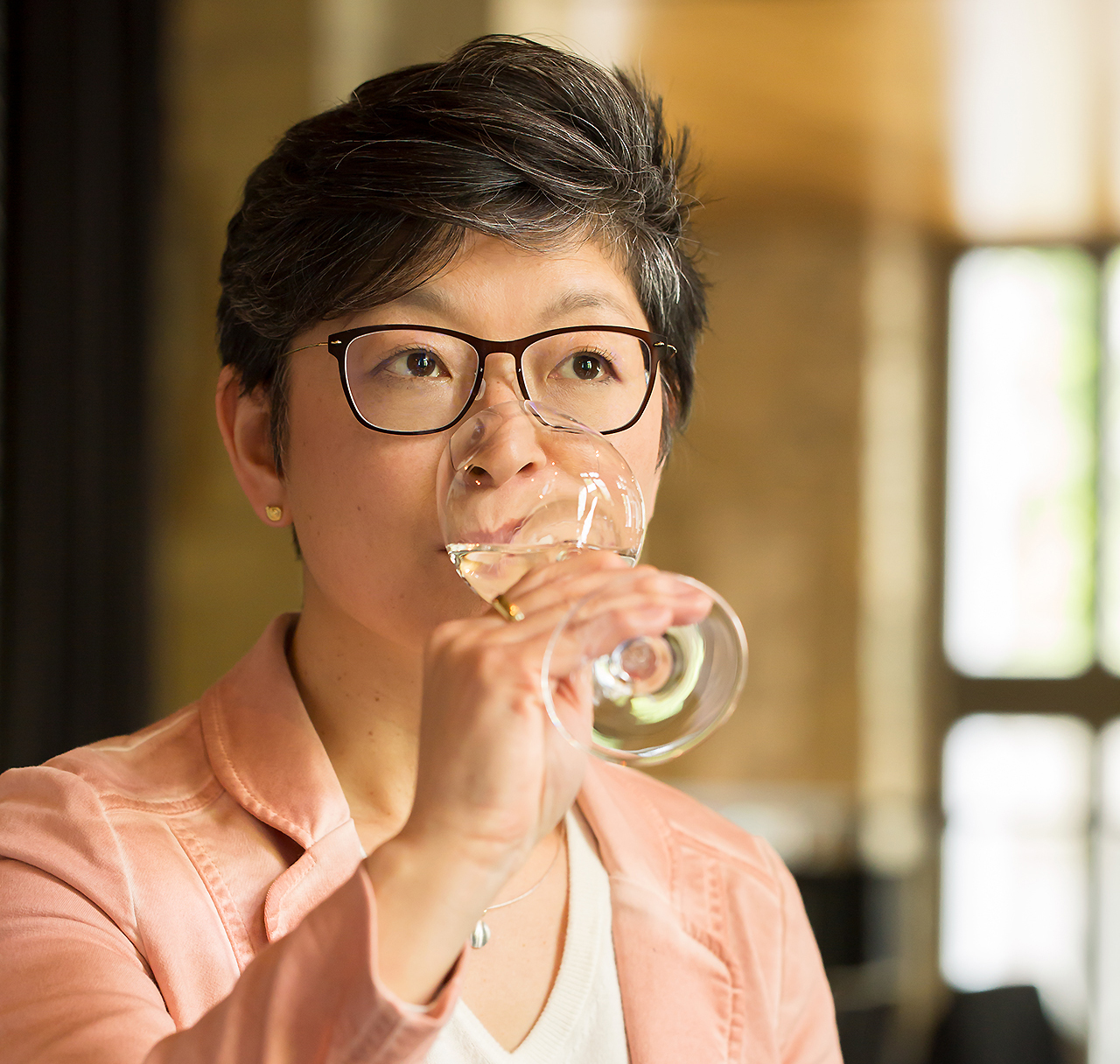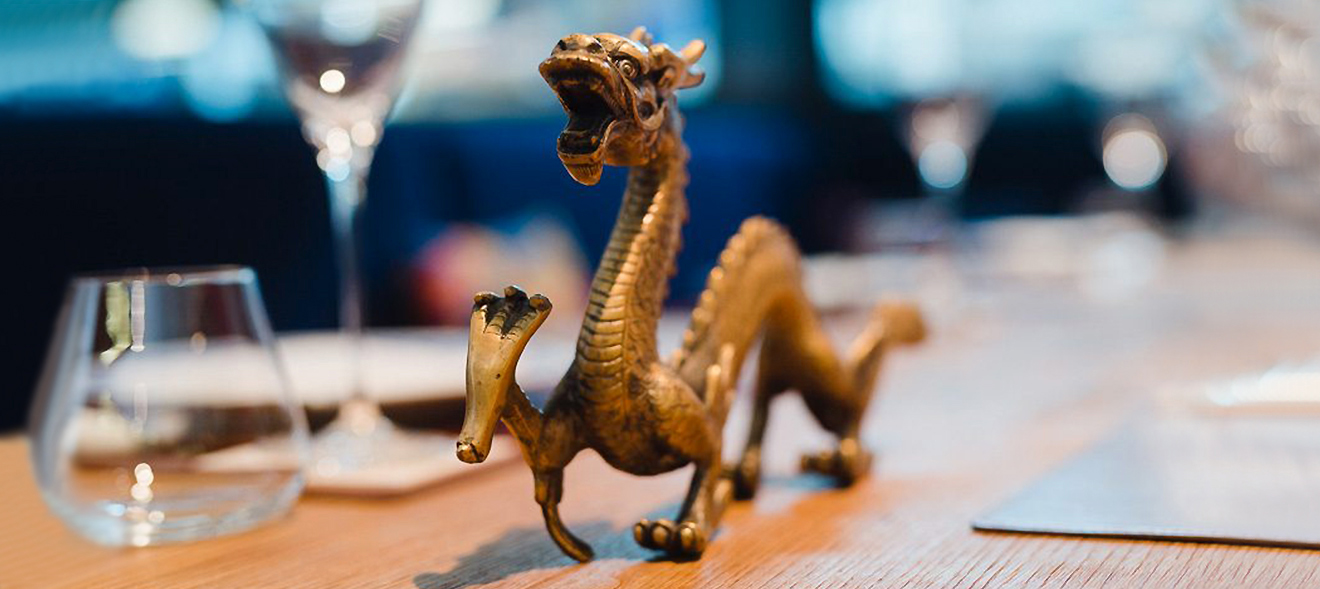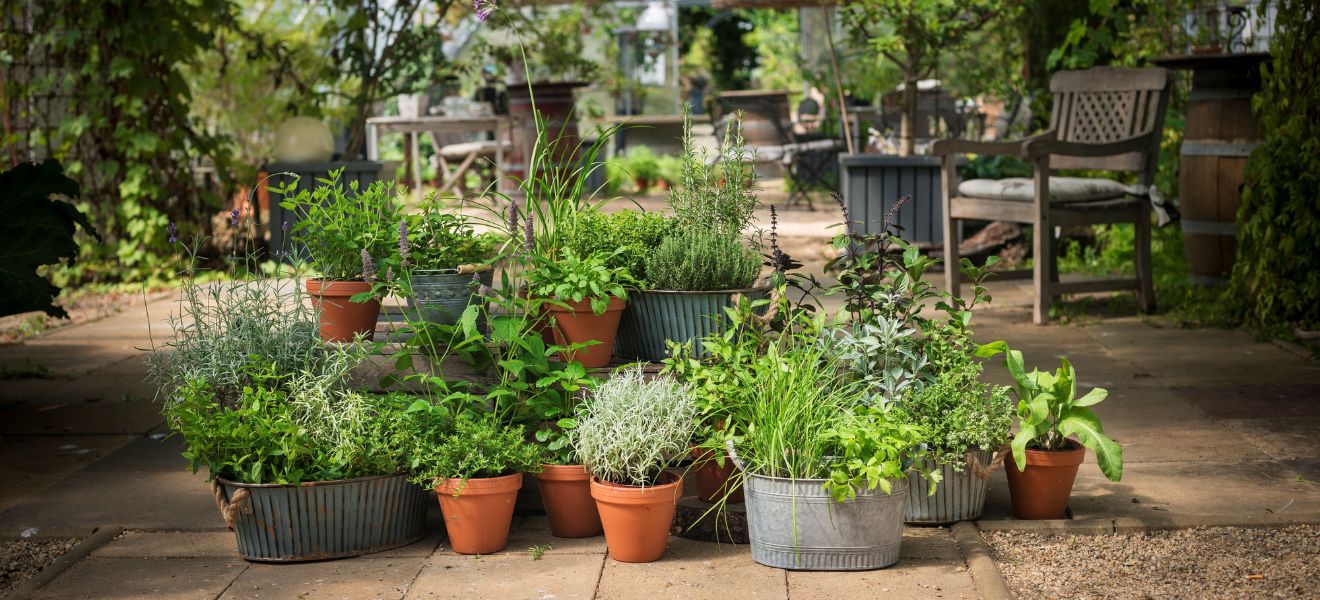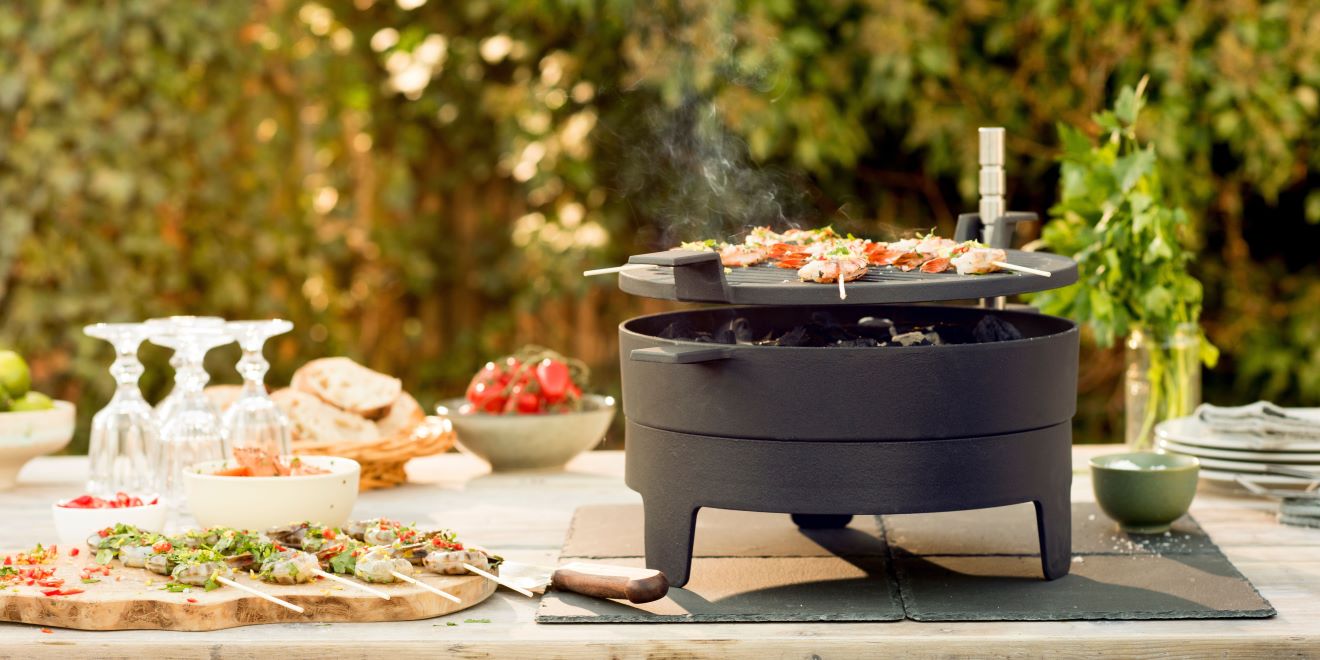Until a few years ago, outside Japan sake was best known as a strong, hot alcoholic drink to accompany sushi. Now, the best types of traditional sake are no longer confined to top-flight Japanese restaurants, but have spread to fine dining establishments and accompany western and Latin American fusion food. Top-quality sake increasingly features on the menu at the most innovative bars – either on its own or as a sophisticated cocktail ingredient. Yoshiko Ueno-Müller, the world’s first female Master of Sake, sees this new taste for sake as something with a lasting effect. She tells us everything we need to know about this drinking culture, and what sake can do for a mussel soup. We now know some of the sake hotspots, too.

Brewing is a craft
The more the grains of rice are polished, removing the husk and sometimes some outer portion of the grain, the more complex and refined the sake. It sounds simple, but this art of brewing has a centuries-old tradition in Japan, and is seen as a sacred craft. The koji fungus is grown on steamed rice, creating the enzyme cultures required. After several days, the fermented rice is ready. It is mixed with steamed rice, yeast and pure water to cultivate a starter mash. Every step is performed by hand. Hard, mineral-rich spring water produces a strong product, while milder varieties are made from soft water. Tasting nihonshu, a specific word for the Japanese alcohol we know as sake, is a similar experience to tasting wine. There are hundreds of aromas the sake can evoke, from wood to fruit, flowers to grass.


Yoshiko Ueno-Müller, our sake sommelier, explains: “It is traditional to brew sake in winter, and make use of the natural cold. The whole production process is very calm. In Japan, we say that good sake makes people happy.” She tells us of the 300-year-old Katsuyama brewery on the island of Honshū, one of Japan’s most exclusive sake addresses. “Master brewers put together special varieties which are outstanding when paired harmoniously with dishes by top international chefs.” Many sake makers host tastings at their own restaurants. Our expert explains: “The Fukuju brewery in Kobe is excellent at this. The region’s particular mountain climate limits the speed of the fermentation process perfectly, which allows makers to fine-tune the brewing process further.”
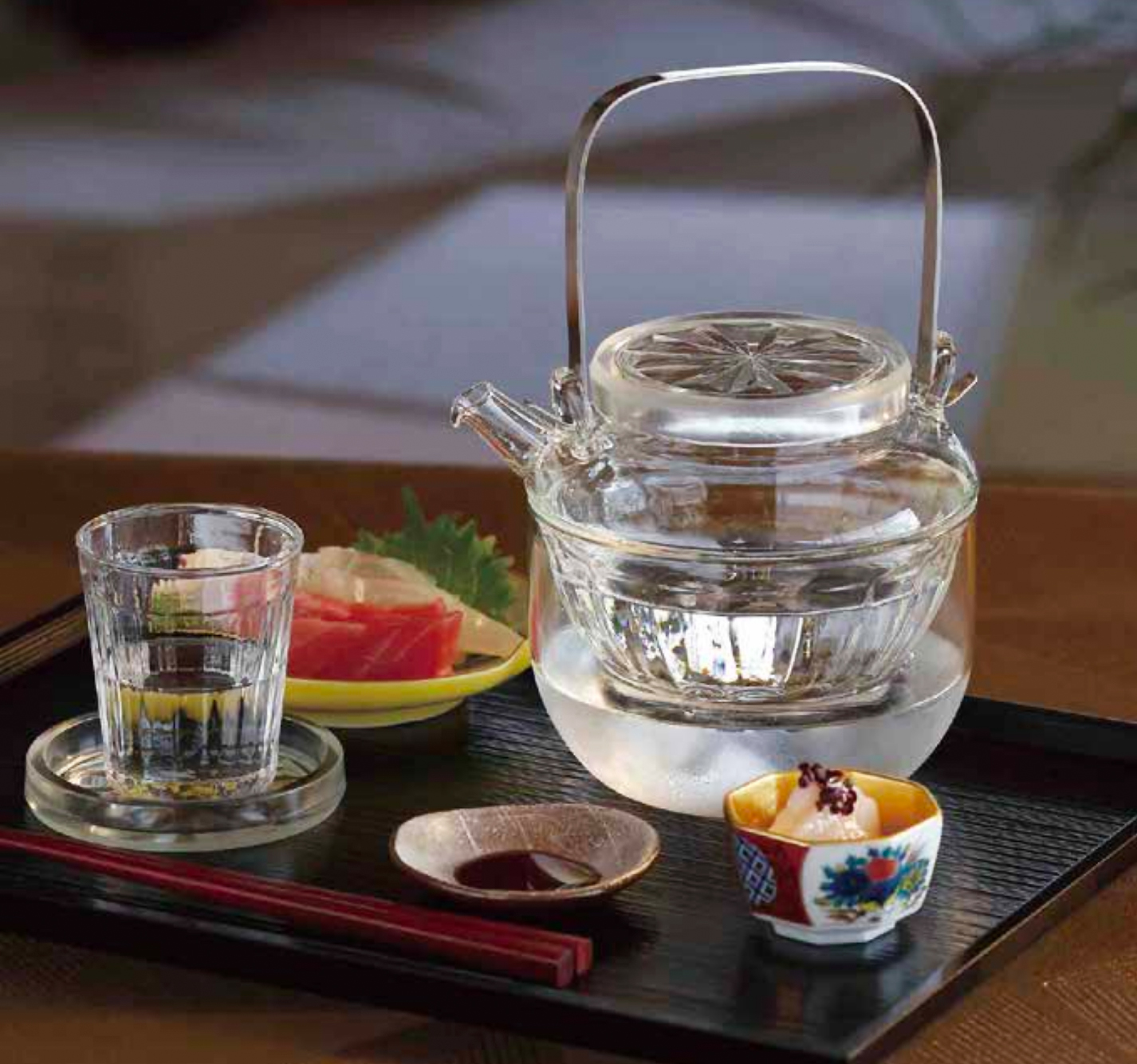
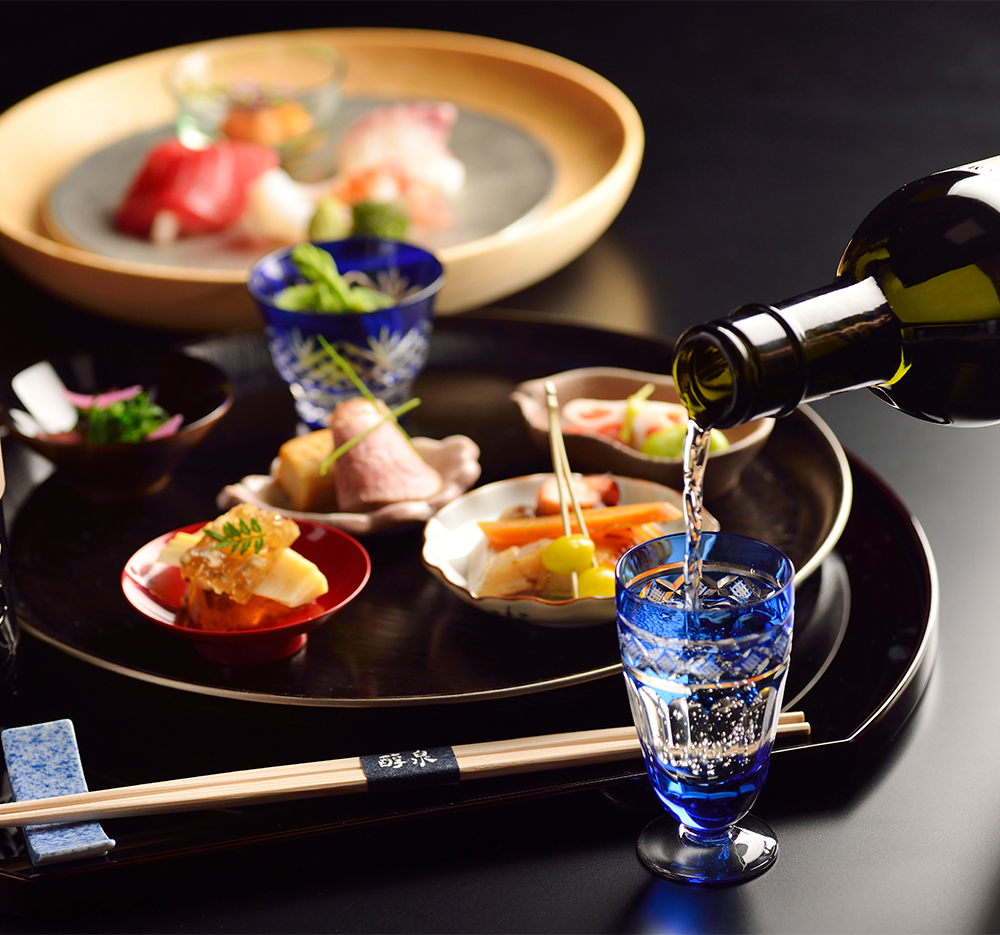
Cheers! Kanpai!
When serving sake in Japan, it is seen as a polite gesture to offer a tray with a mixture of glasses, cups, servers (chōshi) and saucer-like vessels (sakazuki) in various materials and shapes. The more varied and refined these sets and collections, the more desirable they are. The most common drinking glass has a semicircular bowl raised above a stem which tapers upwards slightly from the foot, and has a wide rim. This classic design is suitable for all types of sake, served at all temperatures. Iwaki and Aderia make lovely examples of these glasses. Toyo Sasaki has a factory producing very artistic, colourful glasses like miniatures of the majestic Mount Fuji. The Austrian manufacturer Riedel Glas has designed large-diameter glasses specially for more mature Junmai types of sake, to help brilliantly balance the typical sweet, sour and bitter flavours.
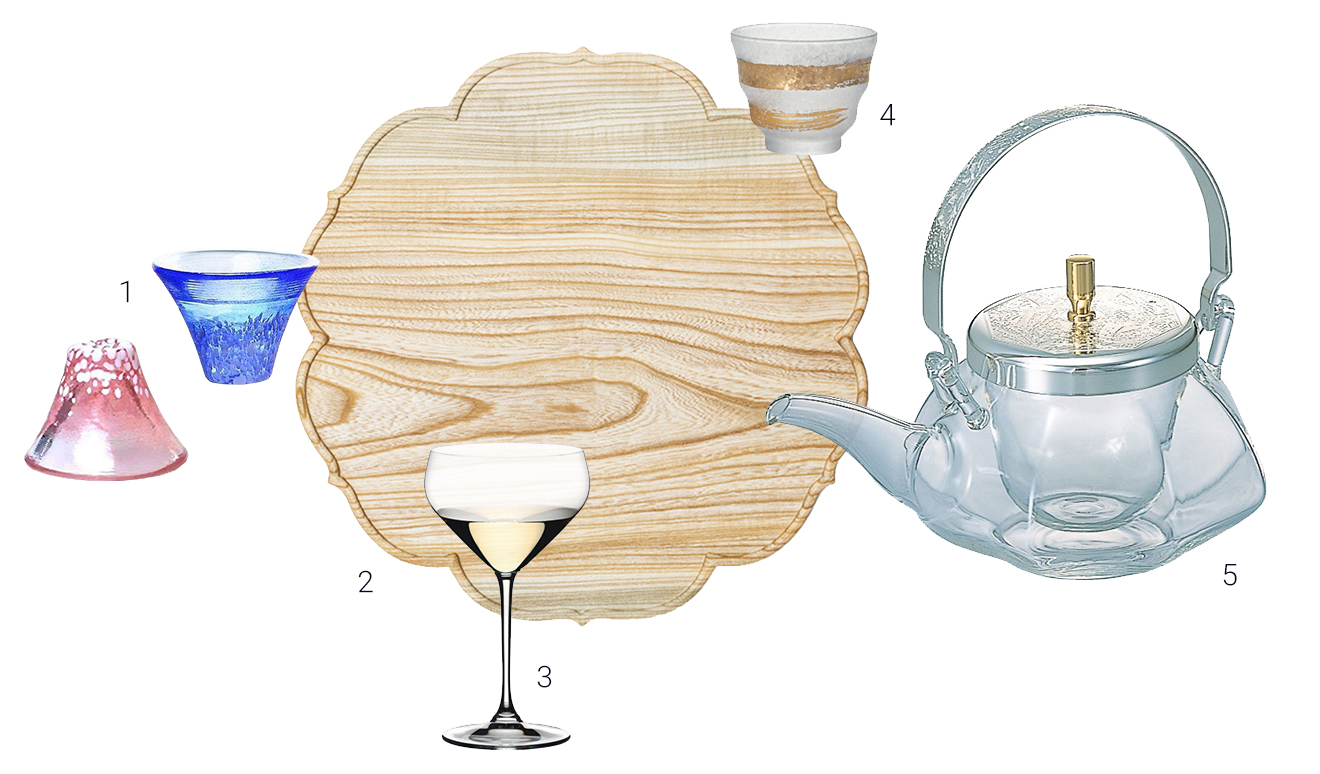
2 Tray by Time & Style
3 Sake glass by Riedel
4 Sake glass by Aderia
5 Sake cooler by Hario
Sake in a shaker
Sparkling sake is in great demand, and is best enjoyed in a champagne glass: the slim glass bowl best shows off its strong ‘perlage’ of bubbles, as it releases subtle citrus and peach aromas. “There are growing numbers of fans outside Japan following this distinct trend: sparkling, bottle-fermented sake – a bit like champagne – whether drunk as an aperitif or in a cocktail. Sake is less acidic than wine, and is therefore smoother, and the taste of rice comes through subtly,” says Yoshiko Ueno-Müller. We recommend glass carafes with a built-in ice cube section to cool it while on the table. The manufacturer Hario has used Japanese teapots as the model for these carafes, underpinning the traditional aspect. Bars and restaurants like Fragrance at Berlin’s Ritz Carlton and its top chef Tim Raue’s restaurant spotted the trend for ‘sake in a shaker’ early on. Yoshizumi Nagaya, Germany’s first Japanese Michelin-starred chef, has also been inspired by the taste universe of premium sake. He learned his craft from masters in his native Japan, and now celebrates it at the Düsseldorf restaurant that carries his name.
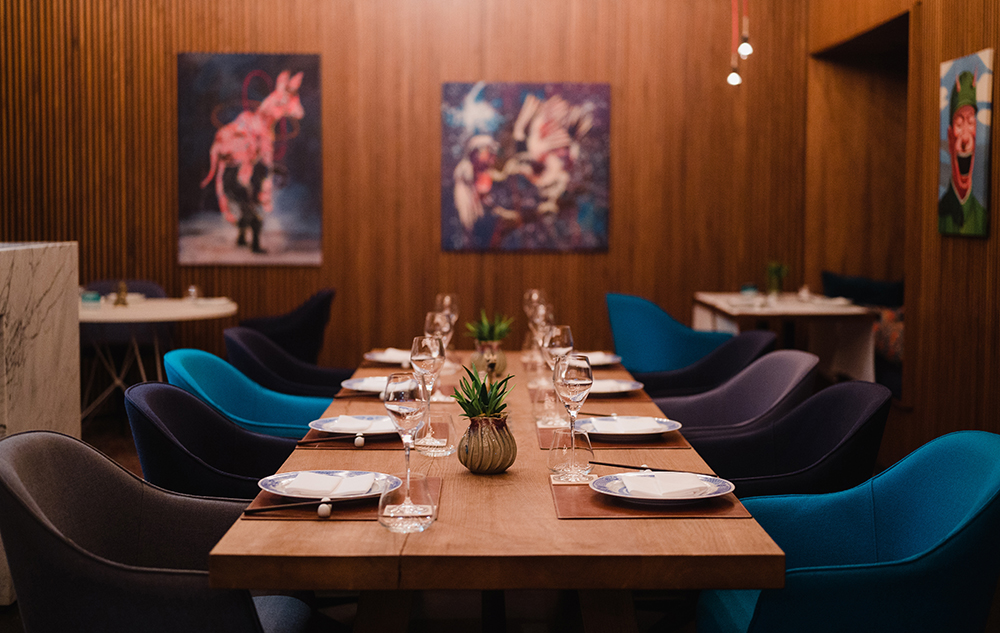
Effects using rice paper
The ochoko cup is a well tried and tested drinking vessel for warm sake, alongside small bowls made of ceramic, porcelain or stoneware. Tokkuri carafes are another essential, and usually have a narrow neck to retain heat. There are many shapes and varieties, including stunning white porcelain cups by Ceramic Japan covered in handcrafted washi rice paper – showcasing several Japanese arts at once.
2 Sake by Urakasumi Sake Brewery
3 Sake set by Ceramic Japan
4 + 5 Sake set + saucer by Miyama
6 Sake cup by T.Nishikawa & Co
2 Sake by Urakasumi Sake Brewery
3 Sake set by Ceramic Japan
4 + 5 Sake set + saucer by Miyama
6 Sake cup by T.Nishikawa & Co
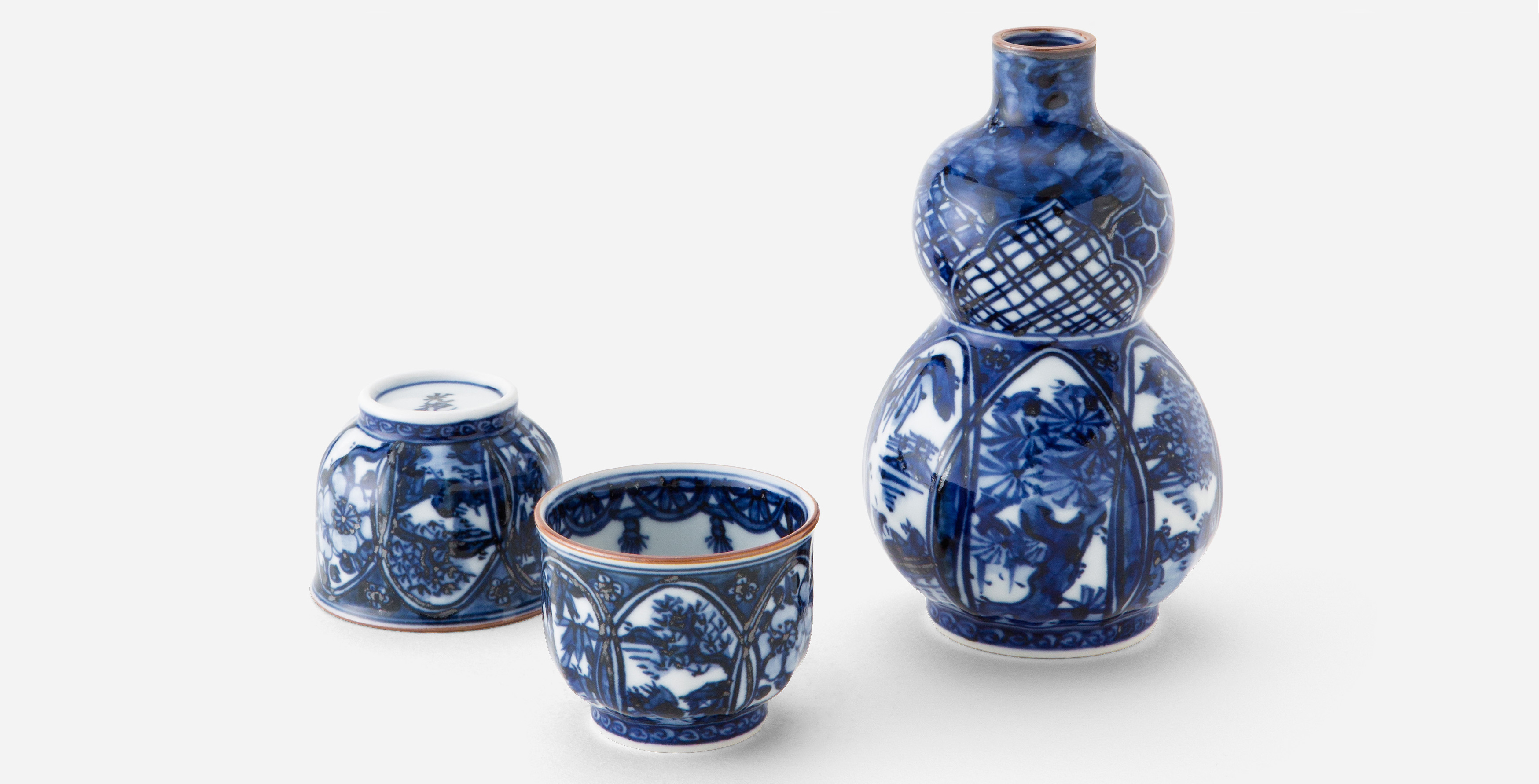
Other drinking vessels take the shape of animal horns or bamboo stems, and combine fragrant wood with metal, as seen in cups by the company Kisen, established in 1946. Ceramic sets by M. Style are much less ‘busy’, and their pared-down shapes really suit the subtle, fine Zen sake from northern Japan. The prize-winning Urakasumi Brewery in the north dates back to an early 18th-century brewer, and has been providing the sacred sake for the Shiogama Shrine ever since.

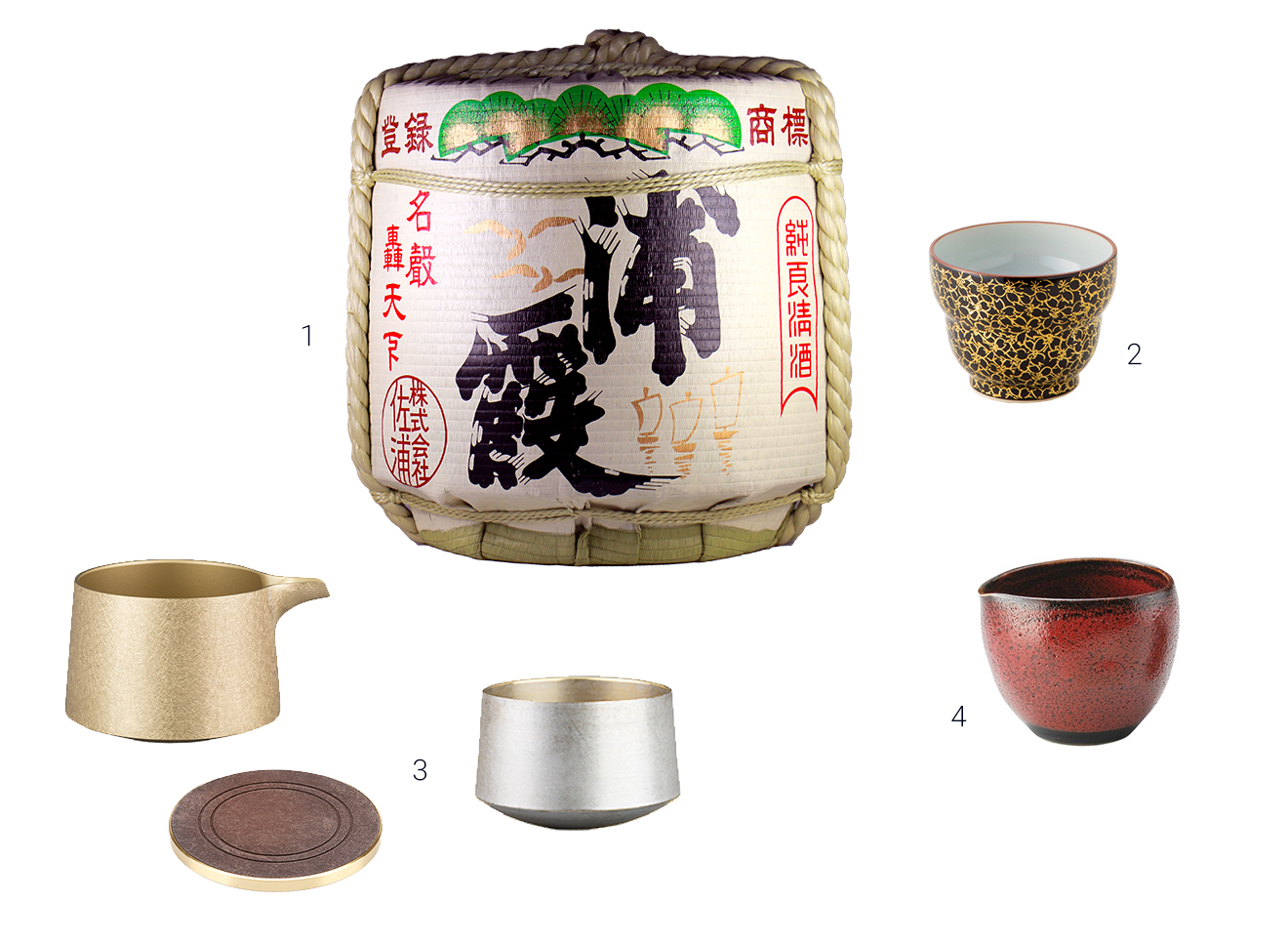
2 Sake cup by T.Nishikawa & Co
3 Sake set by Kisen
4 Sake carafe by M.Style / Miyazaki
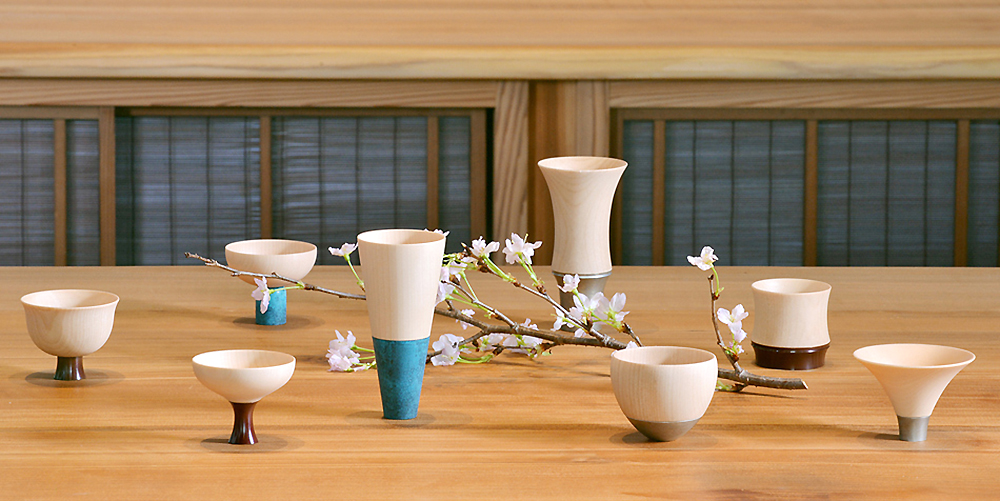
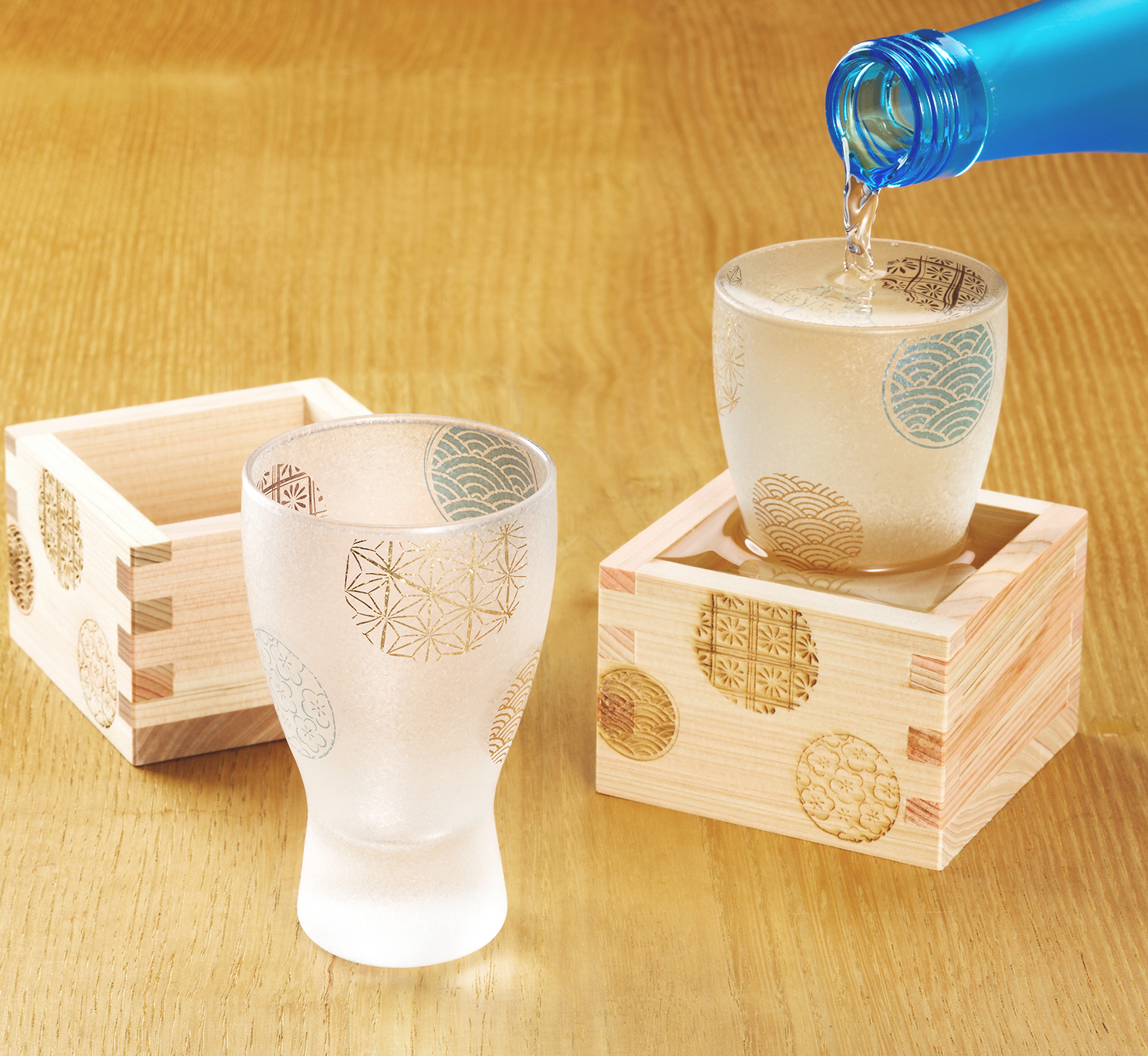
Tasteful wood
Ancient Japanese measuring cups for rice inspired the masu drinking vessel, which looks like a smooth wooden cube and normally contains 180ml of liquid. Hinoki cypress is the tree of choice for this, as it adds a woody fragrance which is said to complement the flavour of traditionally brewed sakes that are aged in cedarwood casks. Yoshiko Ueno-Müller explains: “Traditionally, these wooden cups are used to serve sake for special occasions such as weddings. You also find them in restaurants.”
The light-coloured wood is often decorated with darker, branded characters which represent wellbeing and good fortune. The manufacturer Ohashiryoki makes modern interpretations of the masu cup with colourful, geometric patterns, and charming miniature masus which are worn as good luck charms. Sometimes, what looks like a large wooden box opens up into a sake set with 4 fitting masu cups. The wooden trays by Kodai lend a great presence to any food served alongside the drinks. Our sake connoisseur Yoshiko Ueno-Müller tells us “Sake goes with all sorts of food, even cheese from the Alps. It underlines flavours and complements them gently, without losing its own taste.”
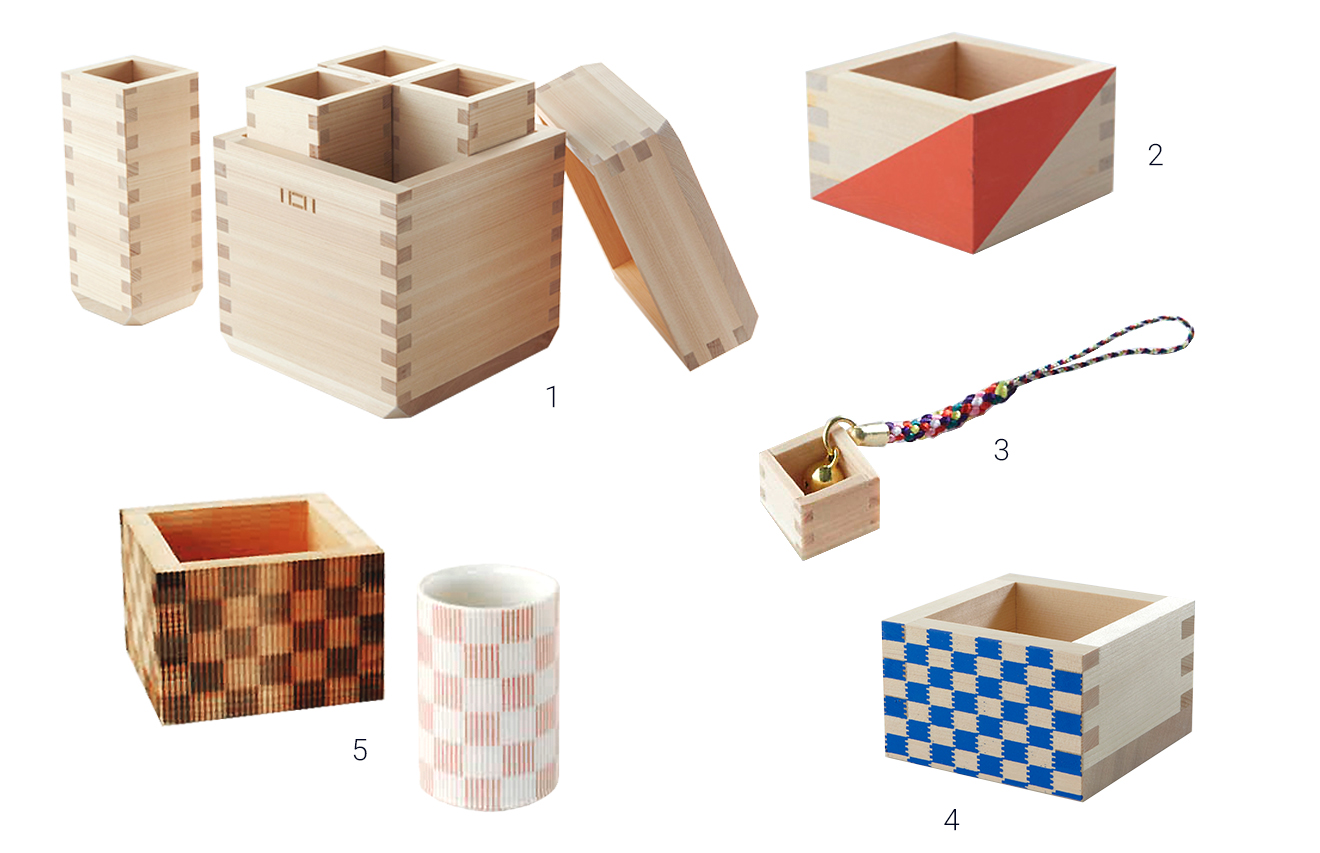
5 Masu cup and sake cup by Miyama
Sake stars
Suddenly sake is everywhere, including where you’d least expect it. All over the world, restaurants and bars are rethinking this Japanese all-rounder which is alcoholic, yet pleasantly light. Top chefs and bartenders are producing unconventional mixtures with it, and selecting the finest sakes to accompany establishment menus. The success of the gastronomic hotspot and sake pioneer ‘Zuma’ in London, which reinvents the concept of a Japanese bistro (izakaya) very creatively, speaks volumes. Zuma’s German founder Rainer Becker has also established spin-offs elsewhere in London under the name Roka, to share in the success. There is even a great selection of places in Frankfurt now which put fine sake on a fitting pedestal. For example, the restaurant ‘Leuchtendroter’ at the Lindenbergh Lindley Hotel, is a modern hybrid bakery/art gallery/upmarket bistro known for being the ‘upstart little sister’ of Michelin-starred restaurant Seven Swans. And let’s not forget the ‘J’epoca SAKABar’, Frankfurt’s first sake bar, with its own shop where you can buy bottles as well as selected handcrafted Japanese sakeware.
Sommelier Yoshiko Ueno-Müller believes that the Nikkei cuisine which Japanese immigrants brought to Peru, now popular worldwide as a blend of both countries’ culinary heritage, is another force driving the steady rise of sake: “Sake goes perfectly with South American dishes. I would recommend the ‘Koi’ in Munich, and the ‘Nikkei 9’ at the upmarket Hotel Vier Jahreszeiten in Hamburg, where a show kitchen creates a cultivated blend of Peruvian and Japanese flavours.”

Sake with mussels – oh yes!
When Japan hosts the Olympic Games in summer 2020, we expect the hype around sake to rank up another notch. The eyes of the world will be on this drink’s homeland. It is part of everyday life there, is said to bestow long life, and bears poetic brand names like ‘heavenly wind’ and ‘dew drop’. Our sommelier says “Sake bottles are often decorated with dragons, an ancient symbol of good fortune.” Here in the west we are tentatively moving towards embracing sake, building up our knowledge of the areas it comes from, its flavours and the right drinking vessels. Perhaps the secret to sake lies in its hand-crafted nature.
Premium sake is the complete opposite of an automated, industrial product – and in our digital world, this type of drink fulfils our longing for authenticity, veracity and purity. Master sake brewers take the purest of spring water, rice, yeast and lots of time. What you might not know is that sake can be used very successfully to flavour cooking. “In Japan, cooking with sake is very popular. Why not try flavouring a mussel dish with smooth sake instead of white wine? Sake is less acidic and emphasises the flavour of the shellfish much more elegantly.”
